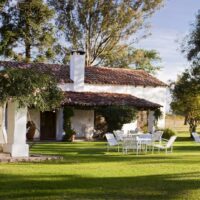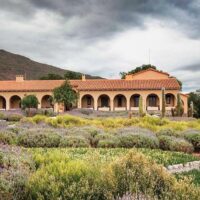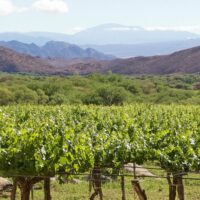The eighth-largest country in the world, Argentina encompasses a variety of landscapes, from Iguazu Falls’ lush rainforest and the marshy Iberá wetlands in the northeast to the granite spires of Patagonia in the far south. Although these are must-visit destinations, admittedly, their popularity draws crowds that can make it hard to enjoy being alone in nature.
By contrast, the northwest corner of Argentina attracts far fewer visitors, despite its undeniable beauty. There lies a stark, otherworldly desert region of multi-colored mountains, towering rock formations, shimmering salt flats, and oasis river valleys cutting through cacti-covered hills. Lesser known than Argentina’s outdoorsy headliners, the remote northwestern provinces of Salta and Jujuy are home to striking desert landscapes, pre-Columbian ruins, charming villages, elegant Spanish colonial architecture, and high-altitude wineries.
Travelers seeking crowd-free, off-the-beaten-path adventure with a healthy pour of history, culture, and excellent wine will delight in northwest Argentina’s slow travel offering.
How northwest Argentina enchants visitors

Deserts, with their wide-open spaces, natural beauty, and tranquility, have always captured the imagination of travelers. Northwest Argentina is no different. Colorful desert hills, red-rock canyons, and cacti forests hold the promise of peaceful, quiet adventure, with (practically) no one else around—save for some spindly-legged vicuñas and soaring condors. Swapping the streets of Buenos Aires for salt flats, and Patagonia’s toothy peaks for sandstone labyrinths, you experience a lesser-visited, natural side of Argentina.
But the desert holds far more than beautiful views and sublime landscapes. From ancient ruins like the Quilmes settlement to picturesque Spanish cities like Salta, you can trace the course of human history here in the high desert.
Despite being a dry, arid environment, the region also boasts a renowned wine scene, including some of the highest-altitude wineries in the world. Malbec still reigns supreme for red wine in these parts, but tastings give you a chance to sample Argentina’s home-grown white: torrontés.
Northwest Argentina is also one of the best places to embrace the country’s laidback, leisurely quality of life. Slow into the natural rhythms of the desert, spend your days indulging in easy hikes, scenic drives, and delicious, hours-long meals with good wine, followed by relaxing nights at historic estancias (ranches) beneath endless night skies.
Northwest Argentina’s 8 best-kept travel secrets
This remote corner of the country may hide its secrets well from the tourist masses, but Extraordinary Journeys South America specialists know all the must-see and must-visit spots in northwest Argentina.
From shimmering salt flats to gorgeous, green vineyards nestled against rocky peaks, these are the best places to visit in northwest Argentina for a luxury getaway.
1. Sip high-altitude wine in the vineyards of Cafayate

Though Mendoza is Argentina’s most famous wine region, it’s far from the only place producing excellent wines in stunning natural settings. Situated three hours south of Salta in the red-rock canyons of Calchaquí, the town of Cafayate is the hub of northwest Argentina’s thriving wine scene. There are roughly 50 wineries spread out across the region.
Sitting more than 5,500 feet above sea level, the altitude and intense sunshine yields tannin-rich, beautifully reds that include malbec and cabernet sauvignon. But Cafayate’s stand-out wine is an aromatic white called torrontés, which actually originates from Argentina.
In the shadow of rocky mountains studded with cacti, sip refreshing glasses of this floral, homegrown varietal while strolling through verdant vineyards at elegant wine estates. It’s even possible to sleep amongst the vines at luxe hotels like El Esteco Winery’s Patios de Cafayate.
2. Marvel at the colonial architecture of Salta

With its grand churches and historic buildings, it’s easy to see how Salta earned its moniker, “Salta the Beautiful.”
The gateway to northwest Argentina, the provincial capital is a treasure trove of gorgeous colonial-era architecture. Admire the wedding cake tiers of the neoclassical cathedral and the vibrant red, white, and golden exterior of the San Francisco Church, which also has South America’s tallest bell tower.
A guided walking tour of the city calls on the most interesting spots. Take a cable car to the top of San Bernardo Hill and view mummified remains and rare artifacts at the Museum of High Altitude Archaeology. You can also soak up the romance of Salta’s past at its luxury accommodations. Memorable properties Hotel Legado Mítico—a 1930’s-home-turned-art-filled-boutique hotel—and House of Jasmines, a gorgeous Relais & Chateaux-associated estancia.
3. Explore otherworldly desert landscapes like the Quebrada de las Conchas

One of the main reasons to visit northwest Argentina is its striking desert landscapes, from the ridges and spires of Quebrada de las Flechas to the flat, enduring desert plains at the Tin Tin Straight Line road. But one of the most striking areas is the Quebrada de las Conchas.
Translating to “shell canyon,” this enchanting part of the Calchaquí Valley is a Martian landscape of red-rock walls, sandstone formations, and color-banded hills. Drive along Ruta 68 to admire the views that evoke a road trip through the Wild West, making any excuse to stop. We might suggest hiking up Devil’s Throat gorge or calling on landmarks like the Amphitheater or the Mirador Tres Cruces viewpoint. These stone walls hide ancient fossils, burrowing parrots, and other secrets, so keep your eyes peeled as you explore them.
4. Go back in time at the ancient Quilmes ruins

Another top northwest Argentina travel highlight is stopping in at the Quilmes settlement near Cafayate. The largest pre-Columbian settlement in the country, this archaeological site was once the home of the indigenous Quilmes people, a fierce group that fended off Inca attacks and kept the Spanish at bay for 130 years. Dating from roughly 850 AD, at its peak, it’s believed around 5,000 people lived here.
Today, Quilmes is a vast complex of low stone walls built up against the mountains looking across the valley below. You can walk around the site to learn more about their lifestyle and culture, as well as view informational exhibits in the on-site interpretation center.
5. Admire art and fine wine at Bodega & Estancia Colomé

Among the many wineries to visit in northwest Argentina, Bodega Colomé is an essential stop for wine and art lovers alike. Not shy of superlatives, it’s the oldest in Argentina (circa 1831), is one of the highest-altitude wineries in the world, and it boasts an esteemed collection of works by American artist James Turrell. Famous for his unique art installations that experiment with light and space, the on-site museum hosts nine of Turrell’s most important works.
Before or after undergoing the surreal, sensory experience of walking through the museum, kick back with a glass of estate malbec, pinot noir, or torrontés in the tasting room to get a sense of what wine grown 10,000 feet above sea level tastes like.
6. Deep-dive into desert history in Tilcara

History buffs will have a field day while visiting the tiny town of Tilcara in the province of Jujuy. With a human history dating back 10,000-plus years, it’s one of the longest continuously inhabited places in Argentina.
A short walk beyond town, the pre-Hispanic Pucará de Tilcara fortress was first built by the Omaguaca people in the 12th century before the Incan empire overtook the fortification in the late 15th century. The site has been partially rebuilt to demonstrate the scale of the fort, and the nearby Dr. Eduardo Casanova Archaeological Museum houses ancient Incan artifacts and relics.
Apart from its rich history, Tilcara is also a lovely place for desert hikes. We recommend trekking through a rocky canyon outside town to reach the Garganta del Diablo waterfall.
7. Take in the colors of Purmamarca’s Hill of Seven Colors

Visiting the spectacular Hill of Seven Colors outside the town of Purmamarca in Jujuy is a must for photographers.
Rising high above the tiny village below, this hill gets its multi-colored hues from layers of sediment that have shifted into wavy lines via tectonic plate movements. Depending on the light, the colored bands range from fiery red to deep, rich purple, making for spectacular, Technicolor photo opportunities.
Purmamarca itself is also worth a stop, boasting colorful buildings to match its famous hill, artisan shops, and a massive, ancient carob tree that’s thought to be ~700 years old.
8. Wander the out-of-this-world, extraterrestrial landscapes of the Salinas Grandes and the Puna

If you’ve ever wanted to feel as if you’re standing on another planet, two places in northwest Argentina stand out.
Located north of Salta, the Salinas Grandes salt flats span 82 square miles of white-crusted desert that could stand in for a lunar landscape. In summer (January and February), storms flood the flats and turn the desert into a giant mirror for perspective-bending photo opportunities. Salinas Grandes is also one of the best places in the world for luxury stargazing and one of the most enchanting places to go luxury glamping in South America.
Down south, past Cafayate, lies another otherworldly region: the Puna. Covering an expanse that’s comparable to the land area of England, this high-altitude desert sits atop the second-highest plateau in the world—more than 11,000 feet above sea level. In this harsh, remote environment, adventurous travelers encounter red volcanoes, Technicolor lakes, alien valleys, towering sand dunes, and curious geographic formations.
At a glance: Why visit northwest Argentina?
- Hike through otherworldly red-rock canyons
- Go on scenic drives through gorgeous landscapes
- Admire color-banded hills that look like something from a painting
- Learn about the lives and cultures of Indigenous groups at historic sites and ruins
- Meander through historic cities brimming with pretty architecture
- Discover lesser-known wine regions and varietals—especially, the high-altitude wineries of Cafayate
- Experience the surreal beauty of sunbaked, hex-tiled salt flats
- Overnight at luxurious accommodations, from historic estancias to modern boutique hotels
Planning a luxury trip to northwest Argentina

When is the best time to travel to northwest Argentina?
Northwest Argentina is a year-round destination, but we think spring and fall are the best times to visit. The winter months (June through September) can be quite cold due to the altitude, while summers (December to February) are hot and rainy.
Visiting in fall (March to May) or spring (September to November) brings warm and comfortable temperatures, fair weather, and opportunities to experience seasonal changes like spring blooms and fall foliage in the vineyards.
If you’re hoping to visit Salinas Grandes at a time when floodwaters turn the flats into a giant, sky-reflecting mirror, you will want to look to the wetter months of December, January, or February.
Related reading: When is the best time to visit Argentina?
How long do you need for a trip to northwest Argentina?
Since many of northwest Argentina’s most popular cities, towns, and landmarks are spread out across the provinces of Salta and Jujuy, a stay of five to seven nights is recommended. This will give you enough time to see the sights, enjoy some downtime, and drive between destinations. In a pinch, though, you can still squeeze plenty into a three-night stay.
Getting around northwest Argentina
Owing to its wide-open spaces and vast distances, northwest Argentina is ideal road trip territory. You can self-drive most of the route in a rental car without issue, but some parts of Jujuy and remote destinations like the Puna require a local guide and driver. Depending on what you want to see and do, an Extraordinary Journeys South America specialist can weigh in on when it’s best to opt for a hired driver and when you can take the wheel yourself.
Which other places pair well with northwest Argentina?
Most travelers fly into Salta via Buenos Aires, so adding time in the Argentine capital is a nice addition to a trip to northwest Argentina. If you want to experience Argentina’s gaucho culture, you can stop in Córdoba to stay at a historic estancia and ride on horseback through grassy plains. Since you’re already in the north of the country, you can also hop on a short flight to the northeast region to look for jaguars and capybaras in the Iberá wetlands or see the mighty Iguazu Falls.
Luxury northwest Argentina vacation itinerary
Keep reading about luxury Argentina travel
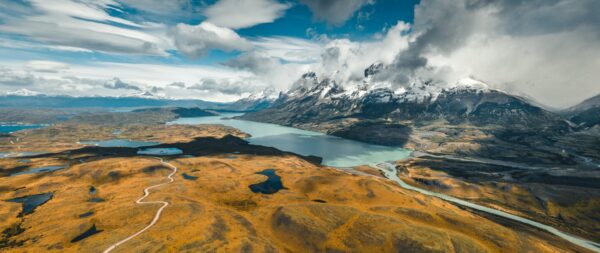
The Best Things to do in Argentina
From standing spellbound before the thundering torrents of Iguazú Falls or loping across…
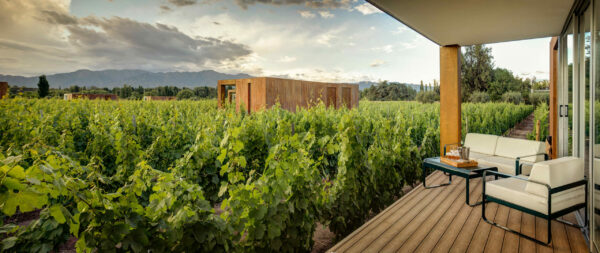
Travel guide to Mendoza, Argentina
Less than a two-hour flight from Buenos Aires a visit to Mendoza transports you worlds…

Which Side of Patagonia to Travel to? Expert Tips to Guide Your Choice
Encompassing 260,000 square miles, Patagonia is a vast region of awe-inspiring mountains,…
Plan your Trip
Ready to start planning your own incredible adventure? We make the process stress-free and enjoyable.


